

| After discovering Shelfmark c29b26 in the British Library Database of Bookbindings, I wrote to Phillipa Marks, curator of bindings at the British Library and she was kind enough to send me a scanned image of this binding. The first plate in Guignard's 1968 publication "L'atelier des reliures Louis XII (Blois ou Paris?) et l'atelier de Simon Vostre." shows rubbings of various imprints. The first of these is a beautiful, if not magical specimen that is found predominately on all early specimens from this workshop, (imprint "A" (quadrillé de fleurettes)). The tool that leaves this imprint was so cleverly made and employed that it is hard to see where the imprints join. |
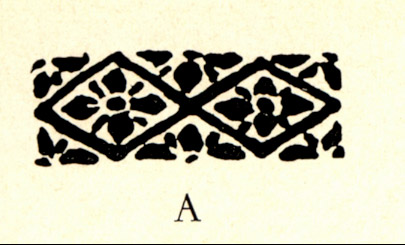

| An enlargement of a 300dpi scan of this imprint from c29b26 shows that the distance from the center of each fleurette is 12.5 mm. I chose this as my standard of measure as it would be relatively easy to always find the centers, even given the various shadow variables. |
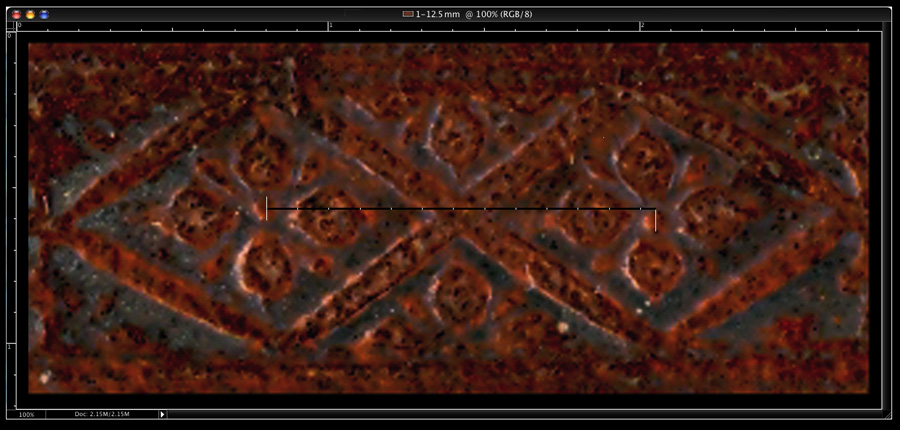
| Let us now look at the c29b26 image that is found on the internet, it is originally at 72 dpi, to simplify things we can set it to what we want to end up with, a 300 dpi image. |
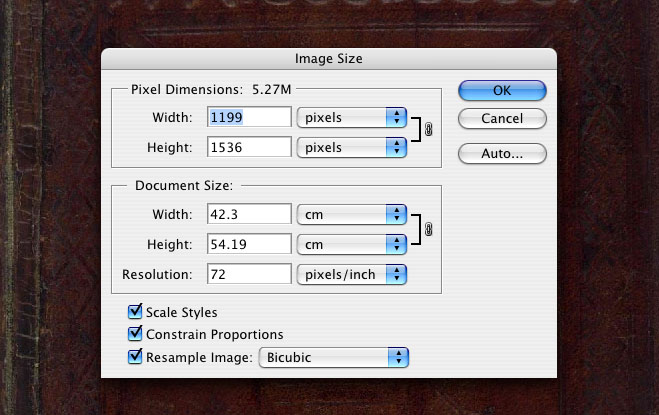
| To do this in photoshop, uncheck the scale styles, constrain proportions and resample image, boxes, and enter 300 in "pixels/inch", this automatically resets the image height and width measurements |
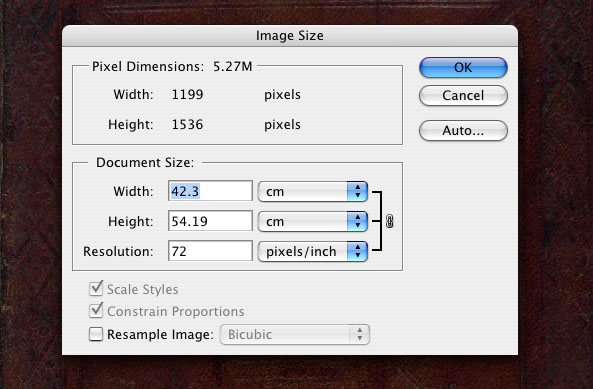
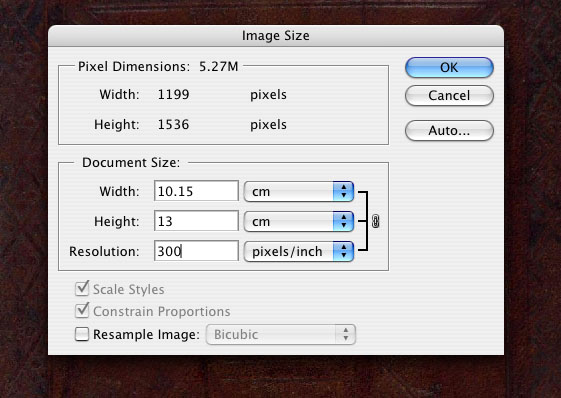
| Because there is a ruler in this photo we can easily resize this page, select a convenient amount of the ruler and copy and past it as a new document. |
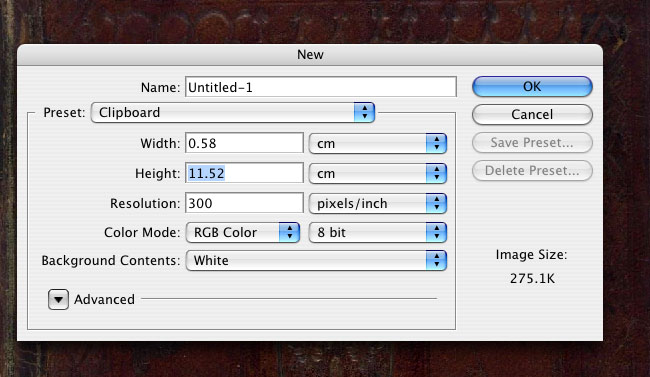
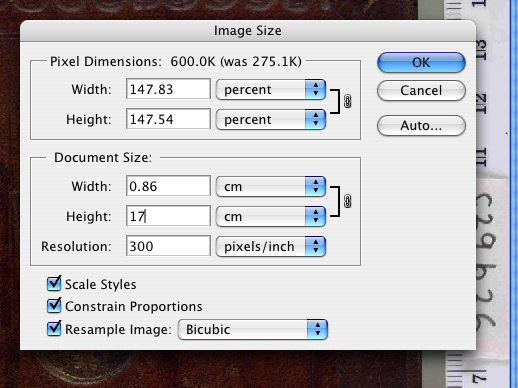
| In this case I have selected a 17 cm portion of the ruler, it is only actually 11.52 cm. If now we set the pixel dimensions to a percentage and change the image height to 17 cm, we see that the resulting pixel change is 147.83 and 147.54 percent, this means that if we enlarge the original image around 147.5 percent the ruler and everything else in the image will be the right size at 300 dpi. Fortunately we can check the results of this enlargement with our scan of imprint "A" . Select the area between the two fleutette centers, copy and paste them as a new document. You can see in the resulting dialogue box that the width of the new image is 1.25 cm or 12.5 mm. |

| the same procedure can be used to resize binding reproductions where there is no ruler in the photo, which is by far more often the case. However here we can use the scanned imprint as our ruler, Simply selection the imprint within the reproduction and resize it to the correct size to get the percent of proportional change needed to resize the entire image. By using these methods I have resized all reproductions of the Louis XII bindings, from these resized images we will now be able to proceed to a thorough comparative analysis of the imprints. On the next page I will list the entire inventory of these bindings linked, to their enlarged images. In an effort to reproduce the complete collection of these bindings, I have had to consider carefully copyright issues that may come into question with certain reproductions. These images have been gathered, and are presented here, for purely research oriented purposes. Any reproduction of these images for commercial purposes will likely result in copyright infringement issues. |
| Visit Virtual Bookbinding | Go to the home page of cyclopaedia.org |